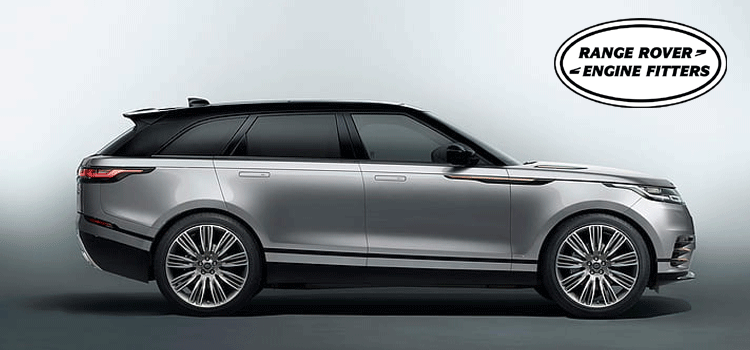Introduction
In the ever-evolving automotive industry, safety remains a paramount concern for both manufacturers and consumers alike. With the advent of advanced technologies, modern vehicles are equipped with an array of safety features aimed at protecting occupants and preventing accidents. The Range Rover, known for its luxurious design and off-road capabilities, also prioritizes safety in its vehicles, including those equipped with the 2.0-liter engine. We delve into the safety features associated with the Range Rover 2.0 engine, highlighting their significance in enhancing driver and passenger safety.
Advanced Driver Assistance Systems (ADAS)
One of the key safety features integrated into Range Rover vehicles with the 2.0-liter engine is Advanced Driver Assistance Systems (ADAS). These systems utilize a combination of sensors, cameras, and radar to monitor the vehicle’s surroundings and assist the driver in various tasks. Features such as adaptive cruise control, lane-keeping assist, and automatic emergency braking contribute to mitigating the risk of collisions and enhancing overall safety on the road.
Emergency Braking
Emergency braking systems are designed to detect potential collisions with vehicles, pedestrians, or obstacles and automatically apply the brakes to prevent or mitigate the severity of an impact. In Range Rover models equipped with the 2.0-liter engine, emergency braking functionality adds an extra layer of protection by assisting drivers in critical situations where a rapid response is required to avoid accidents.
Blind Spot Monitoring
Blind spot monitoring systems employ sensors to detect vehicles in the driver’s blind spots and alert them through visual or audible cues. This feature significantly reduces the risk of lane-change accidents by providing drivers with timely warnings when it’s unsafe to change lanes. Range Rover vehicles equipped with the 2.0-liter engine are equipped with advanced blind spot monitoring technology, enhancing driver awareness and safety on the road.
Surround-View Cameras
Maneuvering large vehicles such as the Range Rover can be challenging, especially in tight spaces or congested areas. To aid drivers in parking and low-speed maneuvering, Range Rover models featuring the 2.0-liter engine are equipped with surround-view cameras that provide a 360-degree view of the vehicle’s surroundings. This feature not only improves parking accuracy but also helps drivers avoid obstacles, reducing the risk of collisions and minor accidents.
Adaptive Cruise Control (ACC)
Adaptive Cruise Control (ACC) is a sophisticated feature that maintains a set speed while automatically adjusting the vehicle’s pace to keep a safe distance from vehicles ahead. Range Rover vehicles equipped with the 2.0-liter engine offer ACC with stop-and-go functionality, allowing for seamless traffic flow without constant manual intervention. This not only reduces driver fatigue during long journeys but also enhances safety by minimizing the risk of rear-end collisions.
Lane-Keeping Assist
Lane-keeping assist systems utilize cameras and sensors to monitor lane markings and assist drivers in staying within their lane. In Range Rover models featuring the 2.0-liter engine, this feature helps prevent unintended lane departures by providing gentle steering inputs or alerts to notify the driver if they begin to drift out of their lane without signaling. By promoting lane discipline, lane-keeping assist contributes to overall road safety.
Traffic Sign Recognition
Keeping track of changing speed limits and traffic signs can be challenging, especially on unfamiliar roads or during long drives. Range Rover vehicles equipped with the 2.0-liter engine feature traffic sign recognition technology, which uses cameras to identify and display relevant traffic signs on the dashboard or head-up display. This feature helps drivers stay informed about speed limits, no-overtaking zones, and other important traffic regulations, enhancing safety and compliance.
Driver Fatigue Monitoring
Long hours behind the wheel can lead to driver fatigue, increasing the risk of accidents due to decreased alertness and reaction times. Range Rover models equipped with the 2.0-liter engine incorporate driver fatigue monitoring systems that analyze driver behavior and provide alerts when signs of drowsiness or inattention are detected. By prompting drivers to take breaks or rest when necessary, this feature helps prevent fatigue-related accidents and promotes safer driving habits. Best information about the range rover engine here at the https://www.rangeroverenginefitters.co.uk/ .
Conclusion
The safety features associated with the Range Rover 2.0 engine represent a convergence of cutting-edge technology and automotive engineering aimed at enhancing driver and passenger safety. From advanced driver assistance systems to intuitive parking aids, these features work in tandem to mitigate risks, prevent accidents, and provide drivers with peace of mind on the road. As automotive technology continues to evolve, manufacturers like Range Rover remain committed to prioritizing safety, ensuring that their vehicles not only deliver exceptional performance and luxury but also provide the highest standards of safety for occupants and other road users.

